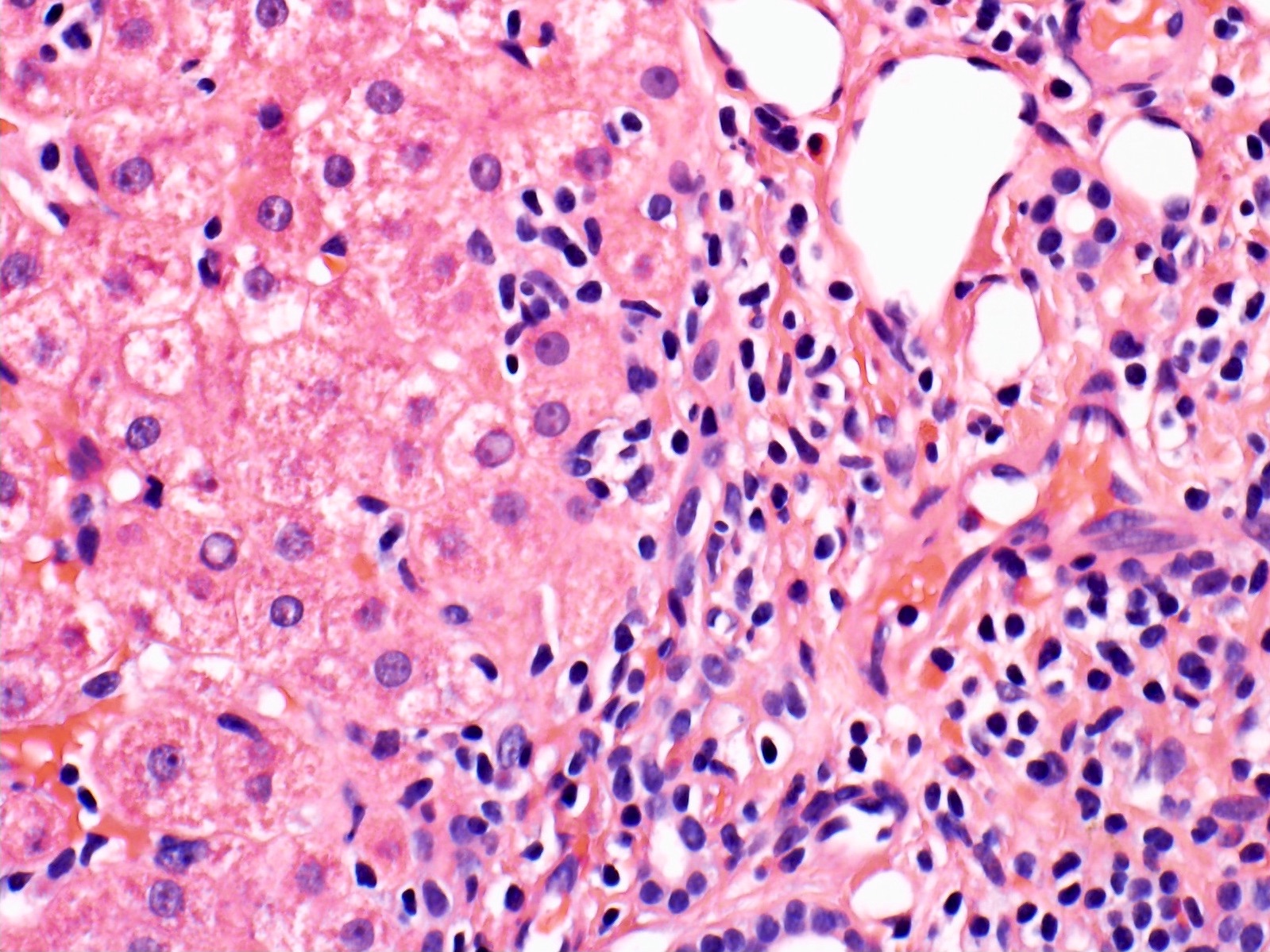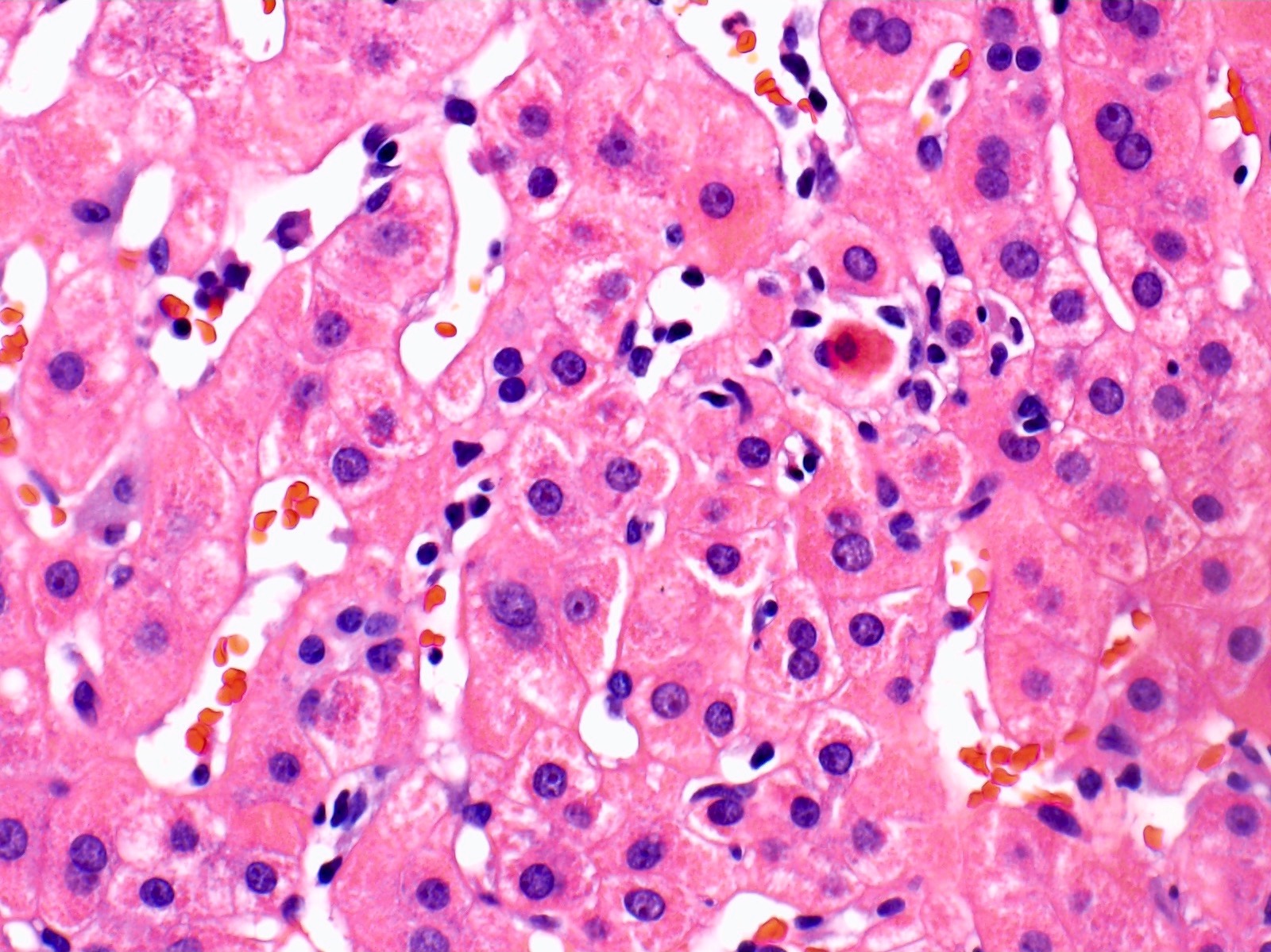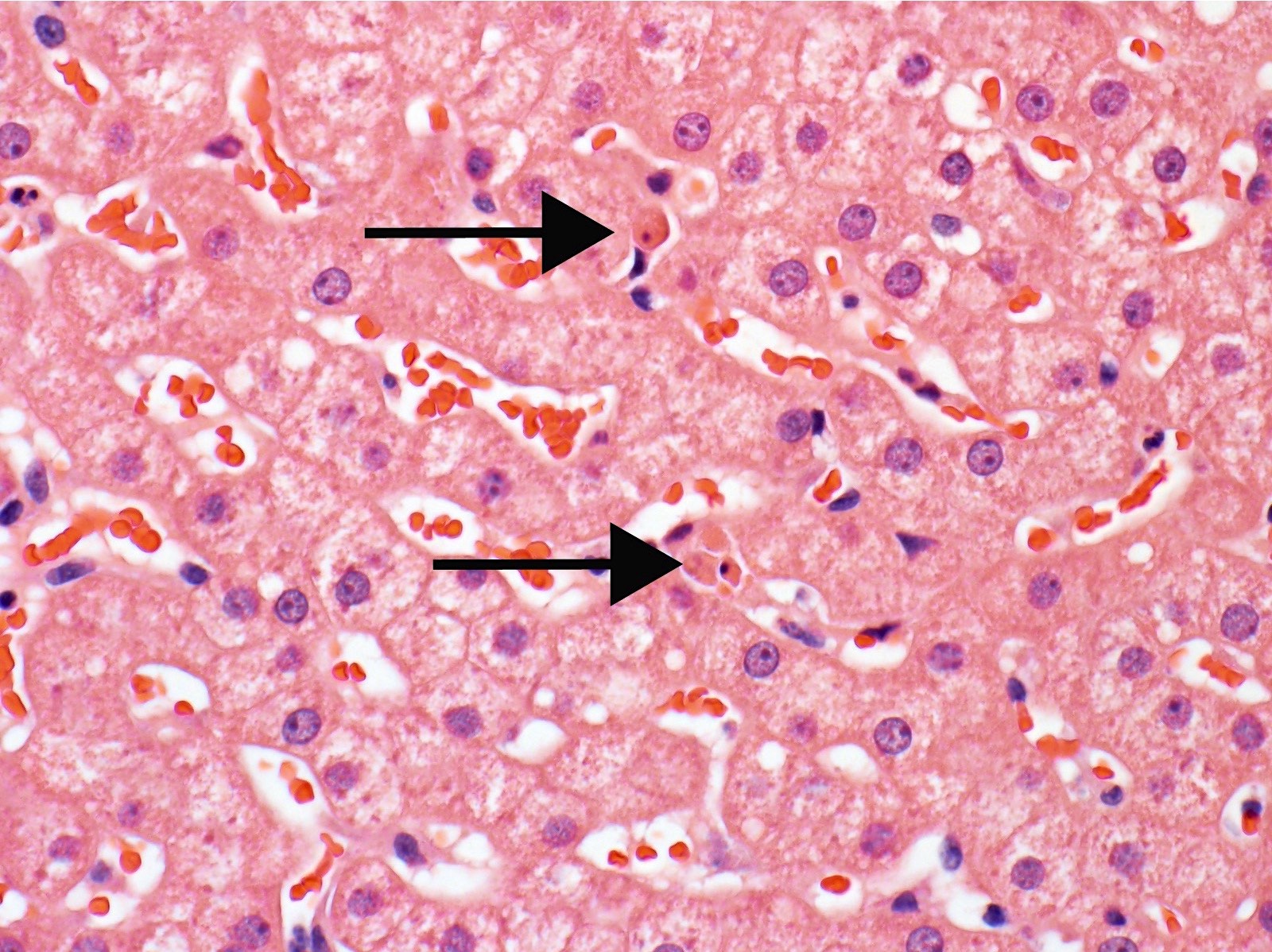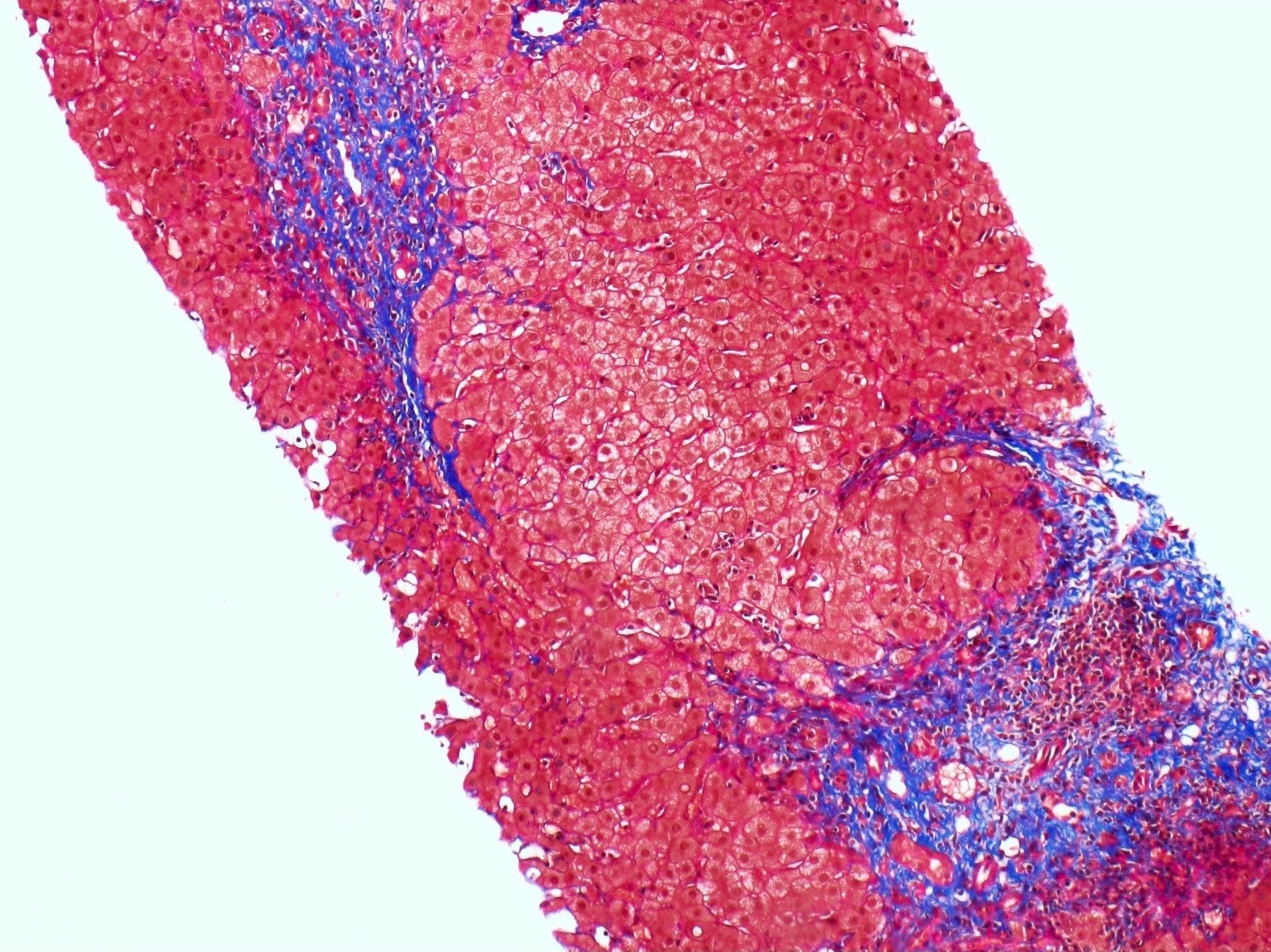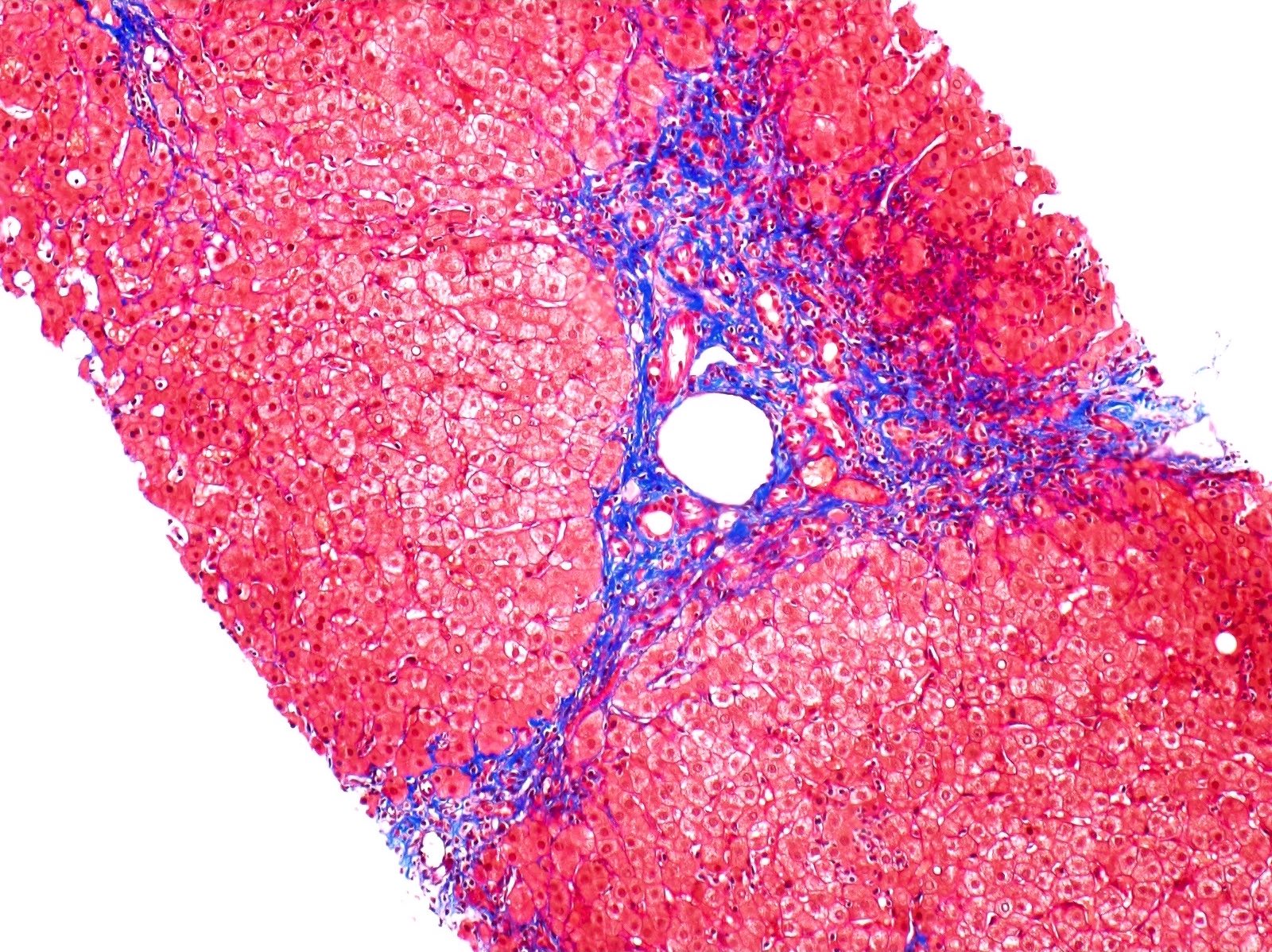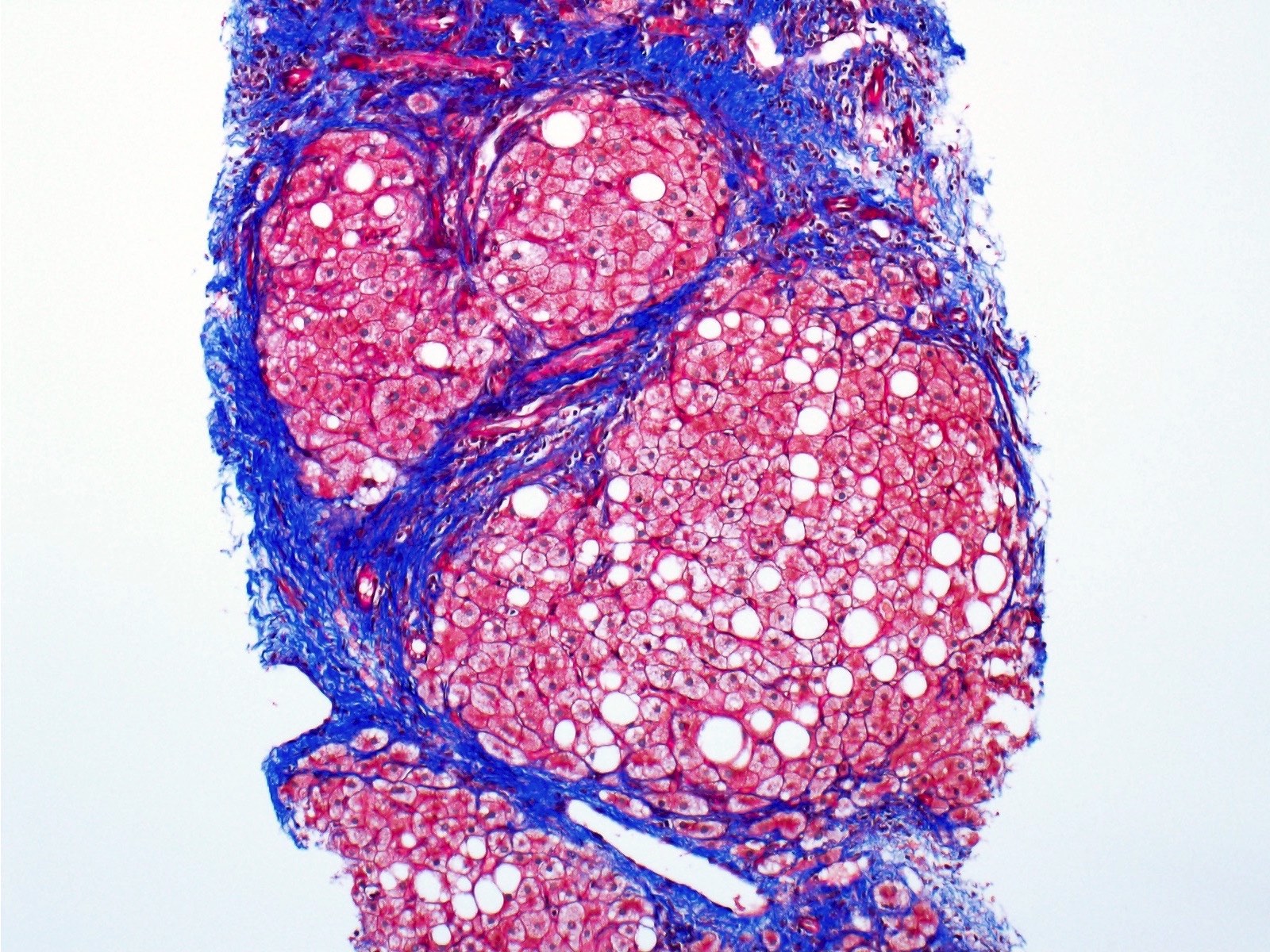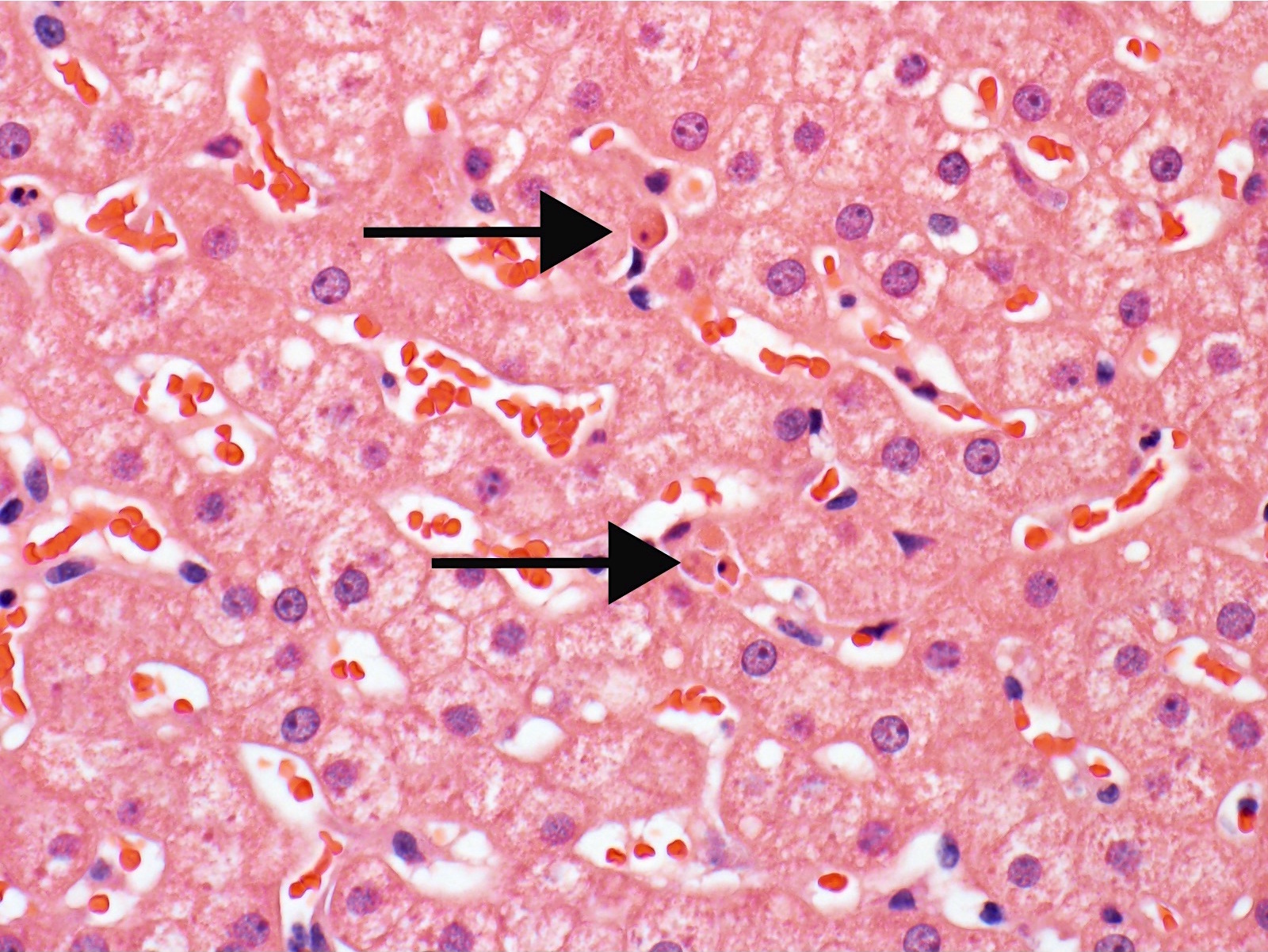Table of Contents
Definition / general | Essential features | Terminology | ICD coding | Sites | Diagrams / tables | Microscopic (histologic) description | Microscopic (histologic) images | Virtual slides | Positive stains | Sample pathology report | Additional references | Board review style question #1 | Board review style answer #1 | Board review style question #2 | Board review style answer #2Cite this page: Evason KJ. Chronic hepatitis-grading / staging. PathologyOutlines.com website. https://www.pathologyoutlines.com/topic/liverchronichepgrading.html. Accessed March 31st, 2025.
Definition / general
- Batts-Ludwig system is the most widely used scale for assessing grade (amount of necroinflammatory activity) and stage (degree of fibrosis) in chronic hepatitis
Essential features
- Chronic hepatitis: liver fibrosis that occurs as a result of hepatocyte based injury and inflammation, most commonly due to viral or autoimmune hepatitis
- Separate scoring systems should be used for steatohepatitis and biliary disorders
- Grade: amount of necroinflammatory activity; indicates rate of disease progression
- Stage: amount of fibrosis; indicates how far disease has progressed
Terminology
- Pathology report should state which grading and staging system (scale) is used for scoring
- Batts-Ludwig system is most common (Am J Surg Pathol 1995;19:1409)
- Other staging systems include Knodell, Ishak, Scheuer and METAVIR (Hepatology 1981;1:431, J Hepatol 1995;22:696, J Hepatol 1991;13:372, Hepatology 1994;20:15)
ICD coding
- ICD-10:
- B18.0 - chronic viral hepatitis B with delta agent
- B18.1 - chronic viral hepatitis B without delta agent
- B18.2 - chronic viral hepatitis C
- B18.8 - other chronic viral hepatitis
- B18.9 - chronic viral hepatitis, unspecified
- K73.0 - chronic persistent hepatitis, not elsewhere classified
- K73.1 - chronic lobular hepatitis, not elsewhere classified
- K73.2 - chronic active hepatitis, not elsewhere classified
- K73.8 - other chronic hepatitis, not elsewhere classified
- K73.9 - chronic hepatitis, unspecified
Sites
- Liver parenchyma
Microscopic (histologic) description
- Batts-Ludwig system is the most common grading and staging system (Am J Surg Pathol 1995;19:1409)
- Scale 0 - 4 for grade and stage
- Grade: amount of portal / periportal and lobular activity (count whichever is greater)
- Portal / periportal activity
- 0: none or confined to portal tracts
- 1: minimal, patchy interface hepatitis
- 2: mild interface hepatitis involving some or all portal tracts
- 3: moderate interface hepatitis involving all portal tracts
- 4: severe interface hepatitis / bridging necrosis
- Lobular activity
- 0: none
- 1: minimal - rare spotty necrosis (can find 1 - 2 dead hepatocytes in biopsy)
- 2: mild - scattered necrotic hepatocytes
- 3: moderate - confluent necrosis (clusters of dead hepatocytes)
- 4: severe - bridging necrosis
- Portal / periportal activity
- Stage: amount of fibrosis
- 0: no increased fibrous tissue
- 1: fibrous portal expansion
- 2: periportal fibrosis with periportal septa
- 3: bridging fibrosis with portal - portal fibrous septa and distorted architecture
- 4: probable or definite cirrhosis with nodule formation
Microscopic (histologic) images
Positive stains
- Trichrome highlights fibrosis (dark blue) and is used to determine stage; do not overstage when edema / pale blue is present
- Sirius red also highlights fibrosis
Sample pathology report
- Liver, biopsy:
- Chronic hepatitis with mild portal and lobular necroinflammatory activity (grade 2, scale 0 - 4, Batts-Ludwig methodology) and bridging fibrosis (stage 3, scale 0 - 4, Batts-Ludwig methodology), consistent with clinical history of chronic hepatitis C
Additional references
Board review style question #1
- Which of the following is true about the finding shown above?
- Indicative of fibrosis and used to determine grade in a patient with chronic hepatitis C
- Indicative of fibrosis and used to determine stage in a patient with chronic hepatitis C
- Indicative of lobular necroinflammatory activity and used to determine grade in a patient with chronic hepatitis C
- Indicative of lobular necroinflammatory activity and used to determine stage in a patient with chronic hepatitis C
Board review style answer #1
C. Indicative of lobular necroinflammatory activity and used to determine grade in a patient with chronic hepatitis C
Comment Here
Reference: Chronic hepatitis - grading / staging
Comment Here
Reference: Chronic hepatitis - grading / staging
Board review style question #2
-
A 55 year old man with chronic hepatitis C undergoes liver biopsy for grading and staging. Sections show portal based inflammation, with mild interface activity. Within the lobules, there are foci of confluent necrosis (clusters of dead hepatocytes) but not bridging necrosis. Trichrome stain shows portal fibrous expansion without definite septae formation or bridging. What would be the most appropriate grade and stage according to the Batts-Ludwig methodology (scale 0 - 4)?
- Grade 1, stage 2
- Grade 1, stage 3
- Grade 2, stage 1
- Grade 2, stage 3
- Grade 3, stage 1
Board review style answer #2






